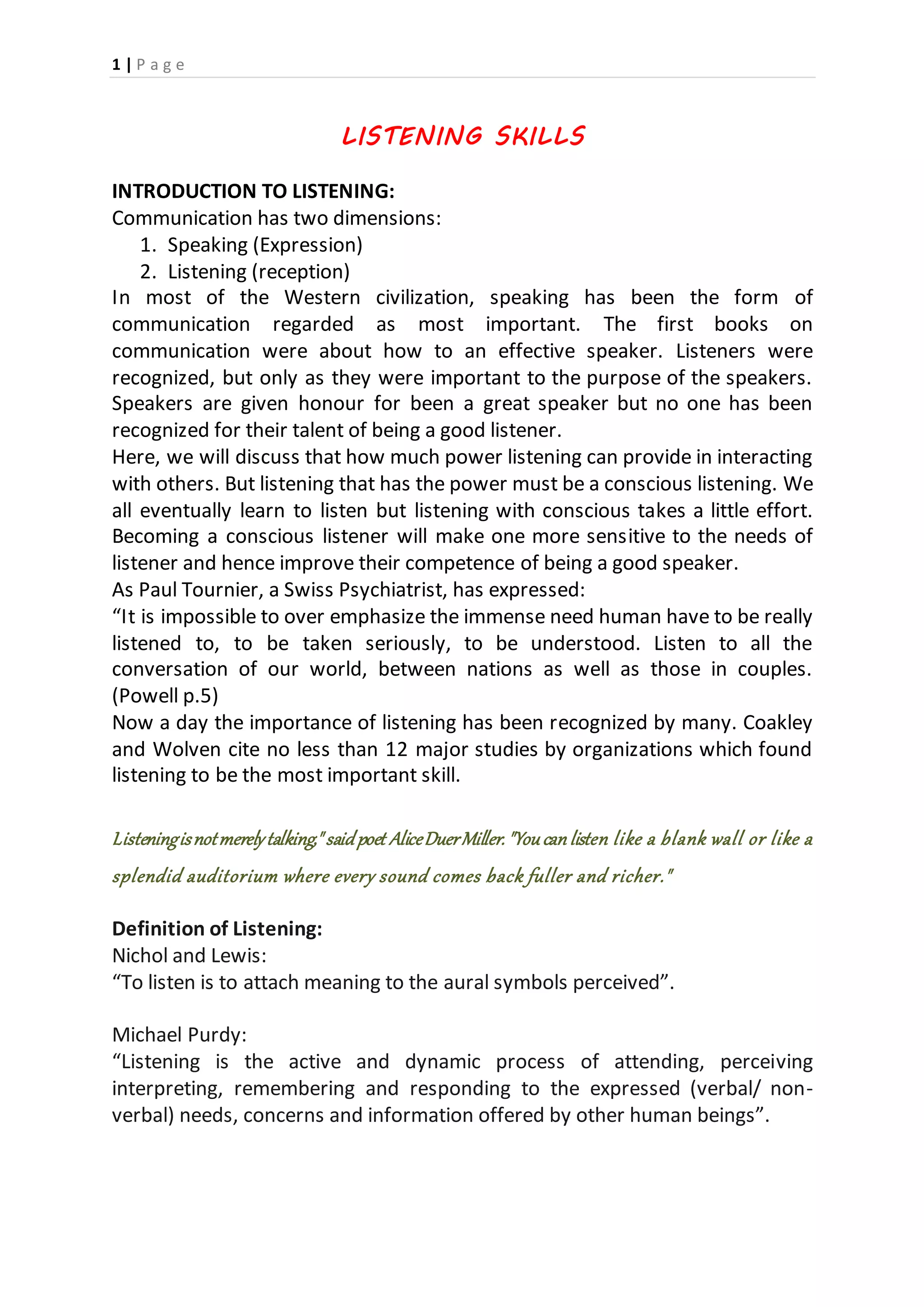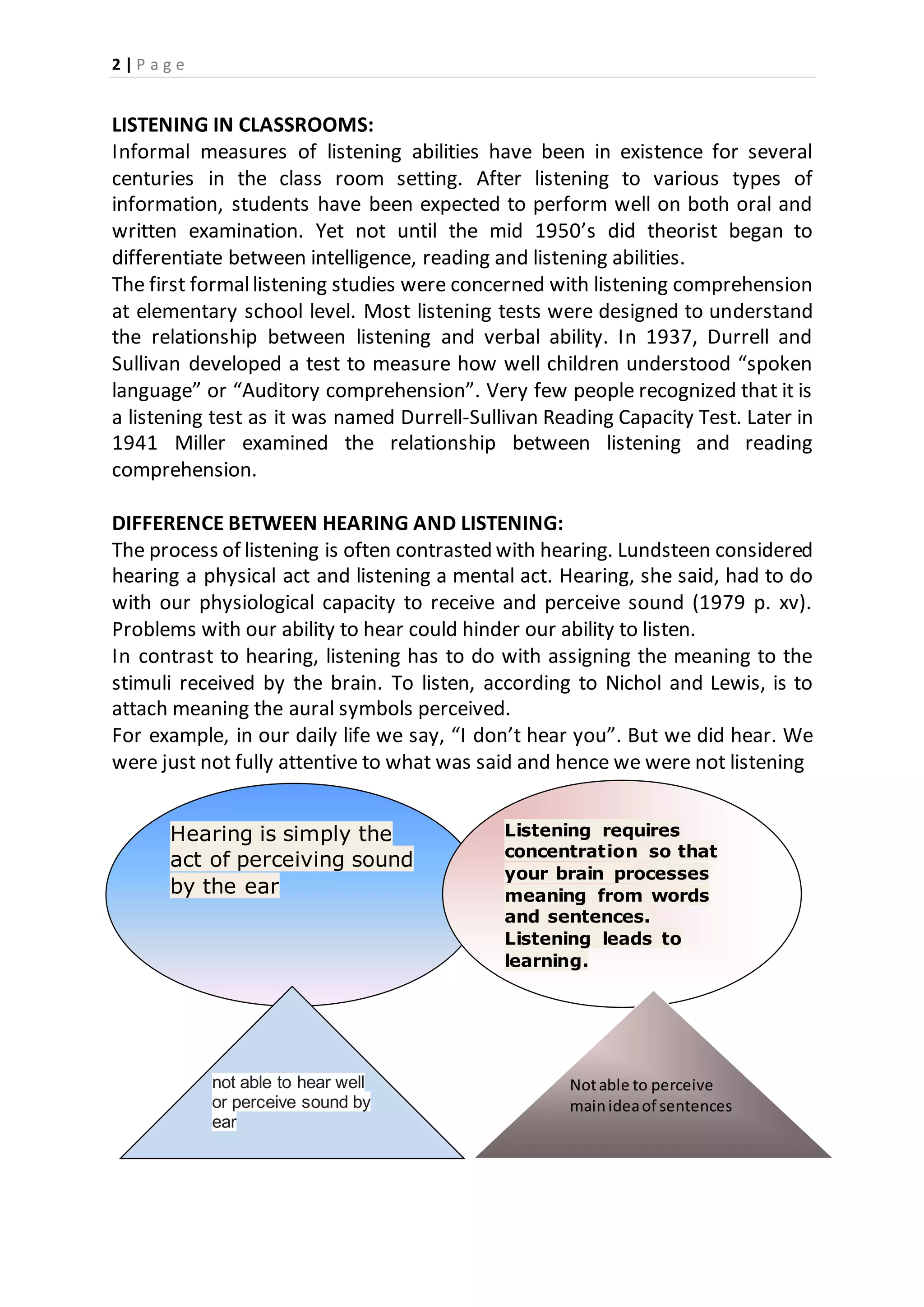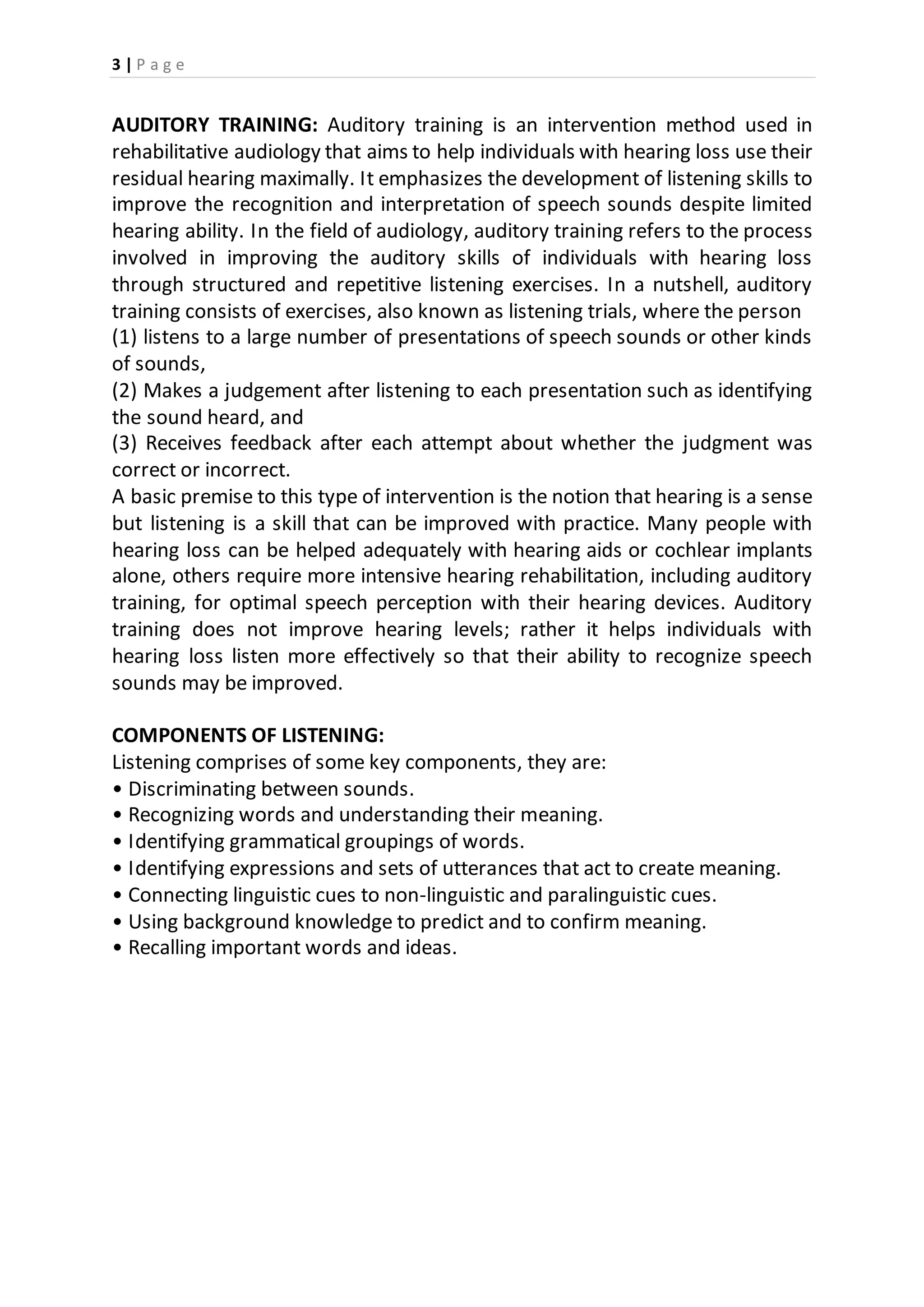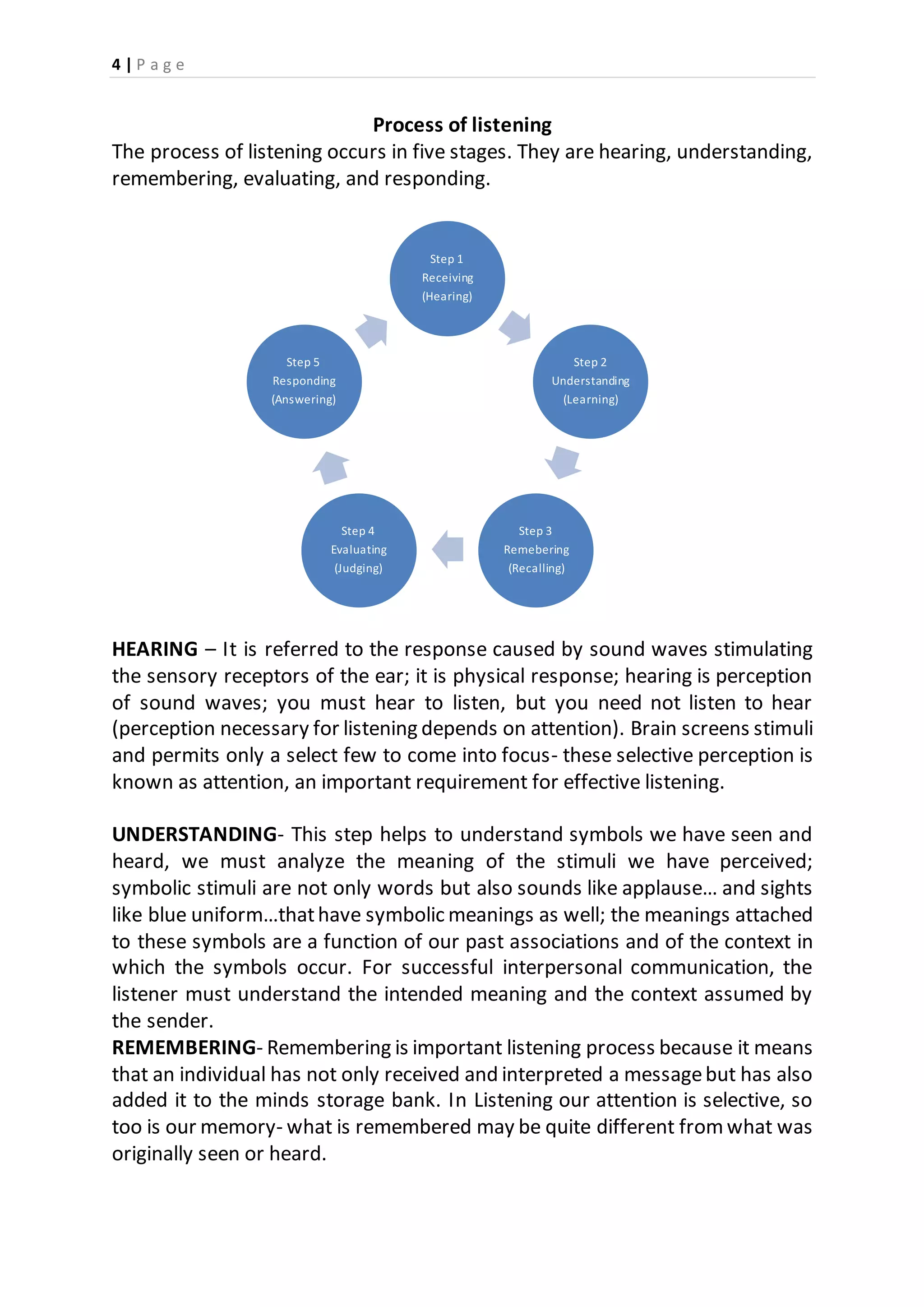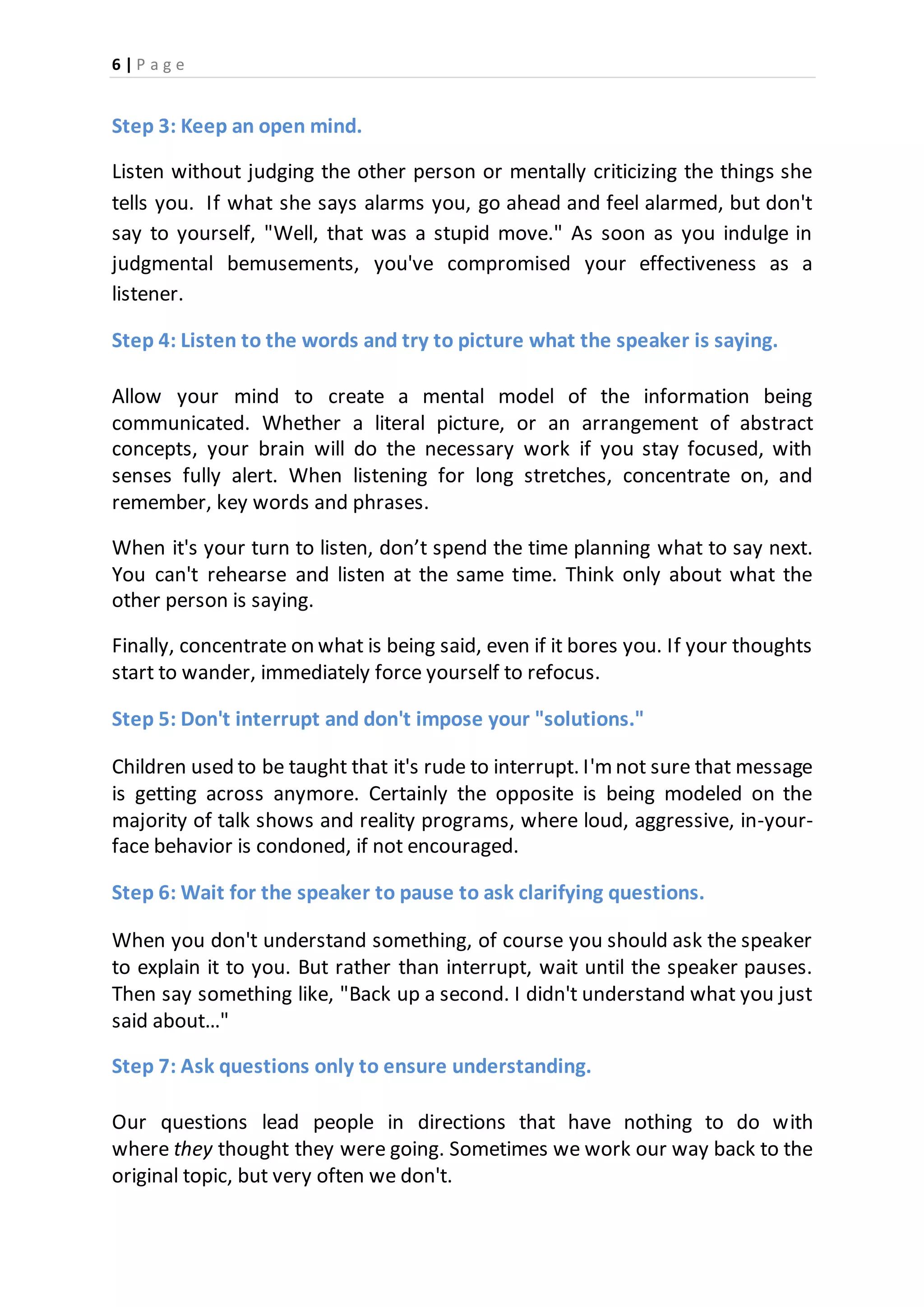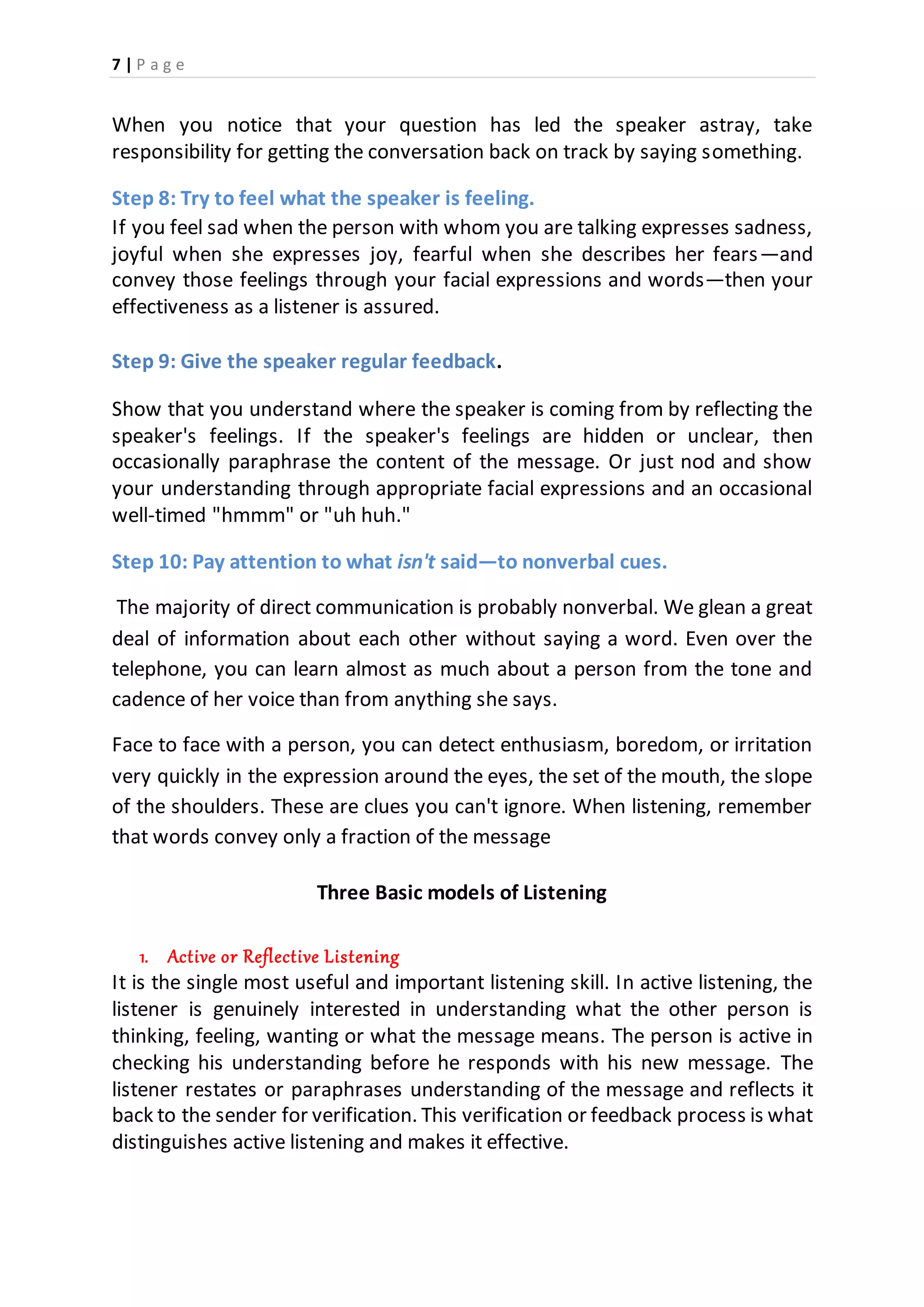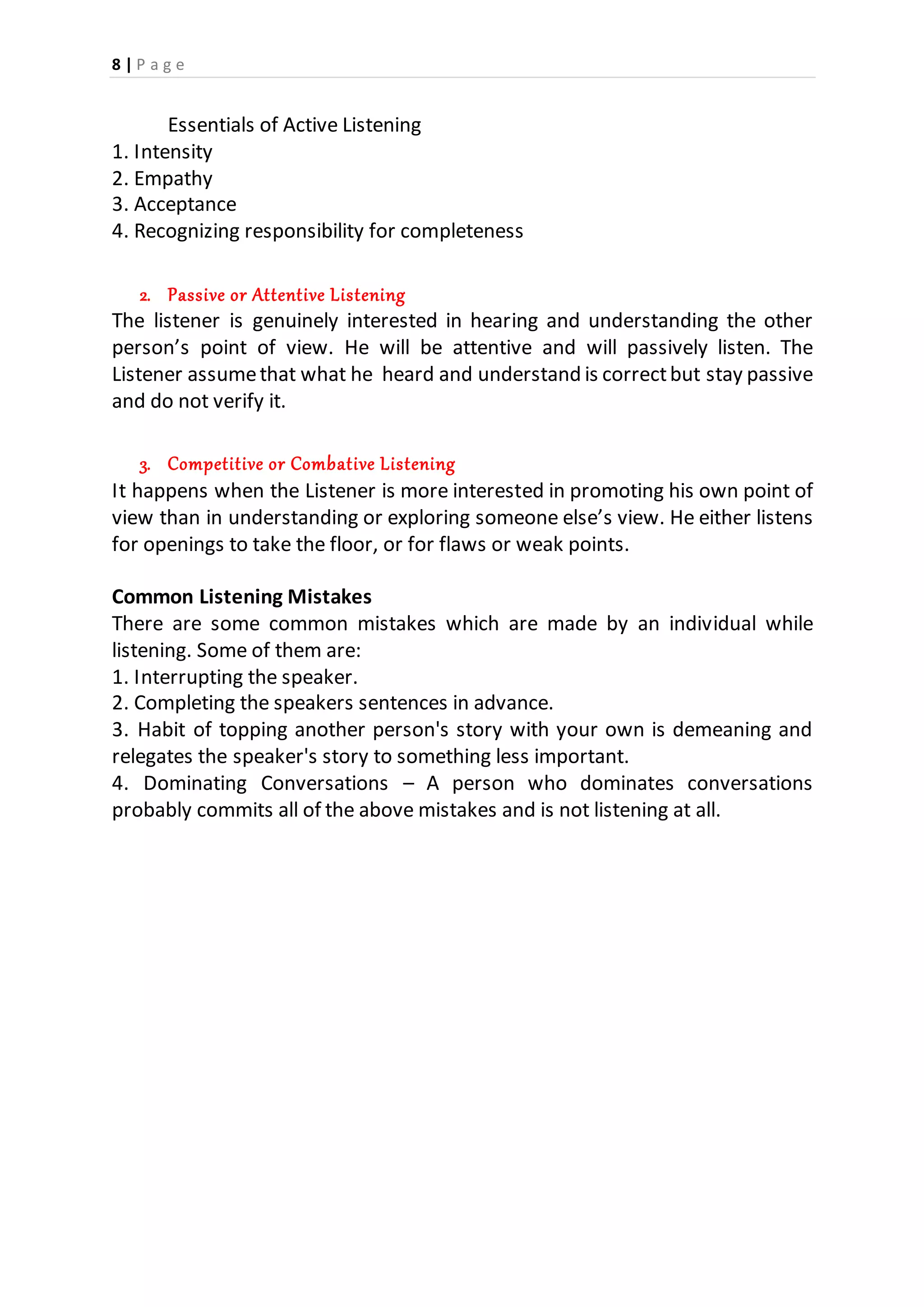The document discusses the significance of listening as a crucial communication skill that is often undervalued compared to speaking. It outlines the distinction between hearing and listening, explaining the stages of listening and the importance of active listening techniques. Additionally, it covers various listening models, the components of effective listening, and common listening mistakes.
